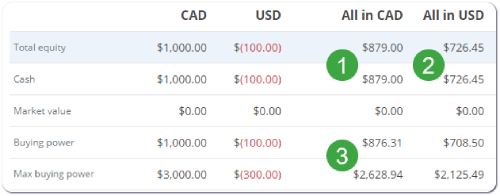As a margin account holder, you have the option to borrow money from us to invest. By doing so, you’ll have more money to buy more shares than you’d normally be able to. If your investments increase in value – you earn more money. On the flip side, if your investments decrease in value, you’ll incur larger losses.
While margin accounts are primarily known for their borrowing feature, they have many other benefits, such as:
- Short-selling - Short-selling is only available in non-registered (margin) accounts
- No contribution limits - Unlike registered accounts, there are no limits on the amount you can contribute to your non-registered margin account
- Joint account ownership - Margin accounts can have two account holders
- Greater trading flexibility - With margin accounts you have access to trade a greater variety of securities when compared to registered accounts.
- Tax advantages - For Canadian individuals, only half (50%) of your first $250,000 in realized capital gains is included in your taxable income. For instance, if you realize $1,000 in capital gains, only half of that ($500) is subject to tax. For capital gains in excess of $250,000, two-thirds (66.67%) of the capital gains are subject to tax. For instance, if you realize $400,000 in capital gains, you’ll pay tax as if you made $225,000 (half of the first $250,000 in gains, plus two-thirds of the remaining $150,000). For corporations and most trusts, two-thirds (66.67%) of all capital gains are brought into taxable income.
- Enable complex options trading - with margin accounts, you can enable level 3 & 4 options which include spreads, naked options, and more.

